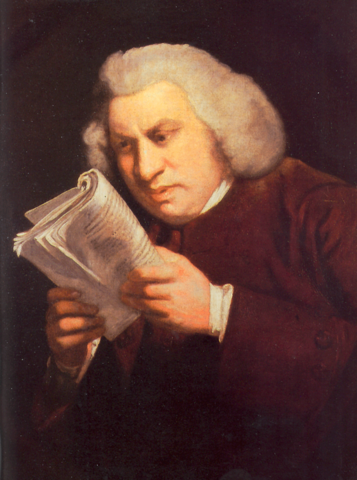You are here
Locating Bias Within A Dictionary
Primary tabs

- Sir Joshua Reynolds
In the course of discussing David Foster Wallace’s essay “Tense Present,” I asked my students to compare and contrast the entries for various questionable or controversial words — such as “irregardless” and “hopefully” — in a few competing online dictionaries.
Critical Thinking & Controversy Mapping
A classroom with a number of computers that have internet access for students to use in groups. An OED account, whether personal or provided by the university, would also be useful. If no computers are available, however, using traditional hardcopy dictionaries is always an option.
From grade school on, students have been told by teachers to look up proper spellings and nuanced definitions in dictionaries. Rarely, if ever, have those students given a second thought to (or been told to question) which dictionary they picked off the shelf. The specific aim of this assignment is to help students locate bias, controversy, and differing positions in what ostensibly seems like a matter-of-fact, trustworthy source. More generally, I want my students to consider the complexity and importance of high-level writing beyond the level of content, at the simplest level of word choice.
To begin with, I introduce the “descriptivist” and “prescriptivist” dichotomy of lexicographical camps to my students, using the Wallace essay mentioned above to guide the discussion. Together we consider why language users — from lexicographers to future employers, their rhetoric professor and their peers — might have a stake in either side of the “usage wars.” Briefly, we walk through the history of the controversy, and list ways in which a student’s use of certain words, styles and spelling conventions might affect her personally. If any ESL or bilingual students are a part of the class, I ask them to compare and contrast the rules of English usage with those of, say, Spanish or German.
At the end of the discussion, I divide my students into small groups and assign them individual dictionaries to explore (see Instructions for Students below). At no point do I indicate which might be “descriptivist” and which could be considered “prescriptivist.” The students take about 10 minutes with their groups to research and then they relay the results to the rest of the class. Once a certain amount of factual information has been presented, I ask the students to make educated guesses as to the various ideologies and positions of their dictionaries.
Prior to class, I organized a list of controversial words that I thought would be illustrative, and researched their respective entries in each dictionary, taking note of what I wanted my students to look for when they were given the chance.
Students should break apart into small groups, each with their own computer. Provide each group with the URL for a particular dictionary, such as:
- American Heritage Dictionary
- Merriam Webster
- Oxford English Dictionary (an account will be needed for access)
- Wiktionary
(If you are feeling adventurous and don’t mind rather vulgar language, Urban Dictionary makes for an interesting counterpart to the more traditional sites.)
Once the sites are loaded, each group should look up a short list of controversial words. In my class, we explored the entries for:
- Irregardless
- Literally
- Hopefully
- Infer
Using either a word processor or a pen and paper, the students take notes on different aspects of each entry, answering a few questions raised in our earlier discussion. These include:
- Are there usage notes, and if so, what is the tone?
- Which definitions are given priority as the primary?
- How is the etymology of each word presented?
After about 10 minutes, the class will reconvene and discuss the findings with their peers. When each entry in turn has been considered, the students hypothesize which dictionaries might be traditionally labelled as “descriptivist” and which could be thought of as “prescriptivist.” Although the dictionaries claim a certain amount of objective authority, students should dig through the minor details to find where bias is buried.
As an in-class group assignment, I graded my students on participation.
My students — a collection of freshmen and sophomores with non-writing majors — seemed surprised at the variety of dictionaries available, as well as the variance between each. None could name a particular one that they had used with any consistency in past assignments, nor had they considered that a dictionary could have bias. Interestingly, the user-generated entries on Urban Dictionary — which we had predicted to be the most permissive and forgiving of the choices — were in fact the harshest, strictest and most pejorative.
This excercise was originally designed for use in Rhetoric 306: Rhetoric and Writing. Any introductory composition course that focuses on researching a controversy might be able to use this lesson plan.
-

- Log in to post comments

